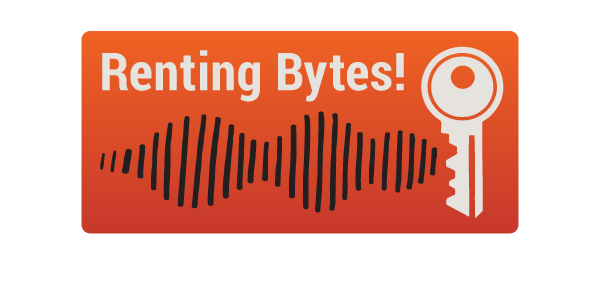Avoiding the spring of carnage: NSW Government rental assistance during the COVID-19 crisis
Robert Mowbray • 04/06/2020
Daniel Ziffer recently wrote for the ABC about the potential impacts of the COVID-19 pandemic for renting households being simply ‘kicked down the road’ leading to a spring of ‘carnage’. He argued that temporary evictions moratorium measures across the country provided inadequate protection, given that in many, if not most, cases they were leading to rent reductions that were really rent deferrals. Many renters were deeply anxious about ‘accruing thousands of dollars in debts they will never be able to repay.’ Others have also expressed concern about evictions and accrued debt once moratorium measures lift across Australia.
In New South Wales this is certainly a situation facing many renters impacted by the COVID-19 crisis. The rent reduction negotiation framework provided by the NSW Evictions Moratorium is failing many. Further relief measures or assistance is required to help avoid the carnage that Ziffer eloquently warns us of.
This blog outlines what rental assistance programs – in terms of dollars towards rent – are available to tenants in the private rental market in New South Wales through the Department of Communities and Justice (DCJ) and other mooted State Government programs. It asks whether this assistance is adequate to ensure ‘impacted’ tenants have the support required, so their rent is paid and does not accrue as a debt and become a rent ‘time bomb’ at the end of the COVID-19 crisis.
Rent Choice Assist COVID-19 Response
On 27 March 2020 the NSW Government announced a $34 million boost in funding to prevent homelessness, with around $20 million set aside specifically to provide rental subsidies to assist vulnerable people in the private rental market during the COVID-19 crisis. DCJ is using around half of this allocation to provide ‘Rent Choice Assist COVID-19 Response’, assistance targeted at people who are homeless or at risk of homelessness. The period of assistance is 6 months, but with the possibility of extending this to twelve months. It takes the form of a subsidy. This is calculated as the difference between a reasonable market rent and 25% of the client’s current gross assessable household income (including 100% of their Commonwealth Rent Assistance entitlement, if applicable). More details can be found in the Covid19 Guide or DCJ provides a useful Q& A here.
‘Rent Choice Assist COVID-19 Response’ is a positive response to tenants struggling during the COVID-19 crisis. It is quite generous (more generous than relief packages seen in other states) and eligibility is based on a ‘low income’ band which has a higher cut off than for social housing.
Here’s an example. Take a couple renting at the median rent in Sydney's Inner West. They have reduced income and meet the low income eligibility requirement. They are not eligible for Commonwealth Rent Assistance (CRA), because they are not on a Centrelink payment nor have children for a Family Tax Benefit payment. They would receive over a 12 month period a benefit of around $11,500 under this product. Those eligible for CRA would receive a less amount. Currently full CRA over a twelve months period for a couple is $3,421 which would come off any payment.
However, the ‘Rent Choice Assist COVID-19 Response’ product has a number of shortcomings. Applicants for assistance are unable to apply to be placed on the Housing Register (that is apply for social housing) if they proceed with their application.
This will place some potential applicants in a real bind. Where they already are on the Housing Register (they will be small in number because their income will be at the border of social housing and affordable housing eligibility), they will have to make a decision on whether to proceed with an application for ‘Rent Choice Assist COVID-19 Response’ and, if so, lose the benefit of the number of years (wait-time) that they have been waiting for allocation of social housing. This restriction should be waived where the applicant is already on the Housing Register.
Another major shortcoming of the ‘Rent Choice Assist COVID-19 Response’ product is that it is limited to Australian citizens and those with permanent residency in Australia. International students and others, such as migrant workers, refugees and asylum seekers, cannot receive assistance under this program. But international students and others are struggling. The DCJ product is in sharp contrast to a rent relief package announced by the Tasmanian Government on 19 May 2020 which extends assistance to temporary residents. There seems no reason why the NSW Government cannot do the same.
Temporary crisis accommodation for international students
On Friday, 15 May 2020 the NSW Minister for Skills and Tertiary Education, Geoff Lee, announced the NSW Government will fund temporary crisis accommodation for stranded international students. The $20 million package includes a temporary housing scheme delivered through approved student accommodation or homestay providers. The Study NSW website states that the crisis accommodation will be limited to international student visa holders who have been laid off employment and have less than $1500 in savings and no other avenues of support. Three weeks down the track there is still limited information on the Study NSW or the Services NSW websites about applying for this assistance. This is consistent with what John Ross states when writing in Times Higher Education. He says that Minister Lee’s announcement appears to be rushed, because the NSW Government was under mounting criticism to do more to help international students.
Update: As of 11 June 2020 an international student can make an application here.
Alan Morris and colleagues put the number of international students who live in the private rental market at around 50%. The program doesn't work to ensure that the vast number of international students in the private rental market can remain in their homes by sustaining their tenancies. The program instead places people with accommodation providers such as Urbanest. Engaging with the private rental market could be achieved by broadening the eligibility for ‘Rent Choice Assist COVID-19 Response’ to include temporary residents, such as international students, but also migrant workers, refugees and asylum seekers.
Further proposed rent relief
There is also another possible avenue of rent relief in NSW. A special sitting of the NSW Parliament on 12 and 13 May 2020 recommended that Parliament amend the Property and Stock Agents Act 2002 (s 167) to allow for a rent relief scheme with the intention that the scheme would provide financial assistance from money held in the Property Services Compensation Fund to landlords who are suffering financial hardship caused directly or indirectly by the COVID-19 pandemic. Monies held in the Property Services Compensation Fund come from a number of sources, including the Property Services Statutory Interest Account into which real estate agents are required to pay a prescribed proportion of interest earned on their trust accounts.
Under the mooted scheme the landlord must demonstrate that a tenant has suffered a loss of income of 25% or more, has less than $5,000 in savings, and is paying more that 30% of the tenant’s income in rent to the landlord. It would provide a maximum payment of $2,500 per landlord per tenancy and the landlord would be required to reduce the tenant’s rent by the amount of any payment under the scheme. The proposed scheme looks very similar in design, though it is slightly more generous to those provided in other states, where relief is capped at $2,000 (see box for more info).
Rent Relief Packages in other StatesOther State Governments that, at 4 June 2020, are providing a rent assistance package to assist tenants impacted by the coronavirus pandemic are: Victoria: Tenants with less than $5000 in savings who are still paying at least 30 per cent of their income for rent may be eligible for up to $2000 in relief payments. Queensland: Up to 27 April tenants who could prove they had lost at least 25 per cent of their income because of the coronavirus pandemic were able to claim rental relief worth up to four weeks’ rent, up to a maximum of $2000. They could also access the payments if their rent exceeds more than 30 per cent of their income. To be eligible, the tenant must have lost their job due to the coronavirus pandemic and have applied to Centrelink for income support. Payment was made to the landlord. Applications for this grant have now closed. Western Australia: Tenants who are struggling may be eligible for $2000 grants which are paid directly to their landlords. Eligible tenants are those who have lost their job, applied for Centrelink support, have less than $10,000 in savings and are still paying at least 25 per cent of their income in rent. Tasmania: Tasmanians and visa holders who pay at least one-third of their income on rent, have less than $5,000 in savings and can prove they experience "extreme hardship" can access rent aid. The targeted support of a one-off $2,000 payment or four weeks' of rent covered also extends to tenants who are not covered by the Residential Tenancy Act 1997. |
Whether this scheme proceeds is up to the NSW Government. At a hearing of the Legislative Council’s Public Accountability Committee on 21 May 2020 Minister Kevin Anderson stated that the Government is presently assessing this recommendation (see page 28 of the transcript for his full comment).
The impacts on housing for those affected by the COVID-19 pandemic will be continue to be felt after the moratorium ends. If rent payments have only have been deferred, rather than waived or covered by one of the rental assistance packages discussed above, it is likely that many impacted tenants will face significant debts which they cannot repay. Alternatively, they may be forced to contemplate bankruptcy, with all its consequences, and no-one is the better off!
We ask a number of key questions of the NSW Government. What work is being done to monitor and report on evictions and rent arrears? What work is being done to ensure government can appropriately respond?
Or, in Daniel Ziffer’s words, ‘will there be a spring of “carnage”’?
Postscript
On 8 June 2020 Minister Gareth Ward announced a $36 million Together Home package aimed at breaking the cycle of rough sleeping. Congratulations to the NSW Government on this much needed commitment of funds as an investment towards permanent housing for people experiencing homelessness.
The day before Ministers Gareth Ward and Mark Speakman re-announced the $20 million funding for a range of Rent Choice assistance programs, with a focus on the rent relief being provided by Rent Choice Start Safely (another rent assistance 'product'). We are concerned though that the $20 million invested towards additional rental assistance will not fund subsidies for everyone who currently might be eligible for Rent Choice through until June 2021. We'd love to see the NSW Government further fund the targeted COVID-19 assistance, as well as other Rent Choice products during this time, and address the two shortcomings of the targeted assistance identified in the blog.
In collaboration with the Australian Government, Good Shepherd is providing no-interest, no-fees loans up to $3,000 towards rent and utilities repayable over 24 months. Check this out here.




